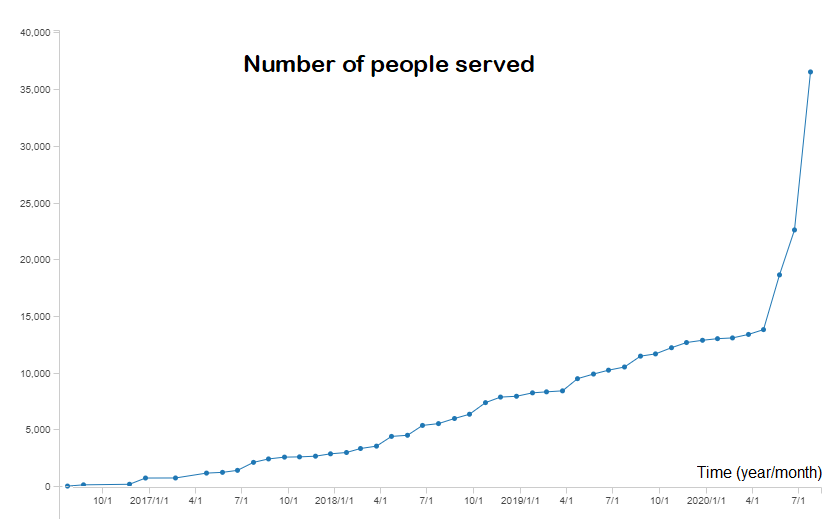We supplied water to all the clinics in Eastern Province, which had no water and where we could reach groundwater. This means that almost all clinics in Eastern Province have water. Unfortunately, a number of clinics have been built in places where we and even heavy machinery cannot find groundwater. The only option for these centres is to collect rain water, but that can only be done in about four to five months’ time. Until then, there will not be a drop of rain.
More and more corona infections are being detected, although it is still impossible to estimate the actual extent. In the meantime, Covid-19 patients have also been admitted in places that we have been able to supply with water with this project. The impact of your help is therefore priceless, not only for the patients but also for everyone living near the installed pumps. In recent months, 22,709 people have gained access to water thanks to your help. This means that the hospital can use water for its patients, staff and patients can wash their hands and people from the community can use water for their households and, of course, wash their hands more often, thus creating the main barrier to prevent Covid-19 contamination.
We are always amazed how quickly and professionally a group of enthusiastic small-scale entrepreneurs, such as the drillers we trained, can carry out such actions over a large area. Every health centre requires a different approach, there are no two comparable situations. The trained entrepreneurs are accustomed to unexpected problems and have the ability to deal with them within a certain budget.
The number of unexpected problems in this project was beyond everyone’s expectations. But there is even some money left and with that we will provide a number of schools with access to water.
Normally we focus on pumps that are privately owned. A private pump serves an average of 55 people and is well maintained because ownership and therefore responsibility are clear and the owner uses water for income-generating activities, such as growing vegetables, keeping small livestock, making bricks etc. Moreover, people in rural areas often live far apart from each other, which means that there are not many users per water point.
In times of Covid-19, however, we felt compelled to temporarily let go of that criterion. By way of emergency aid, we placed pumps at hospitals. In this way we reached a lot of people, as the graph above shows. However, we know from experience that pumps that are not privately owned are generally poorly maintained. Our research showed that some pumps at hospitals had been broken for years because the water committee could not or did not want to maintain the pump. Often there are arguments about who is responsible. It is customary for pumps to become the property of “Water committees” or in this case “Health committees”. That is a group of users from the community who are the official owners of the pump. These groups often work well in the beginning, it remains to be seen whether that will continue to be the case.
Anyway, the project has already prevented a lot of suffering.

